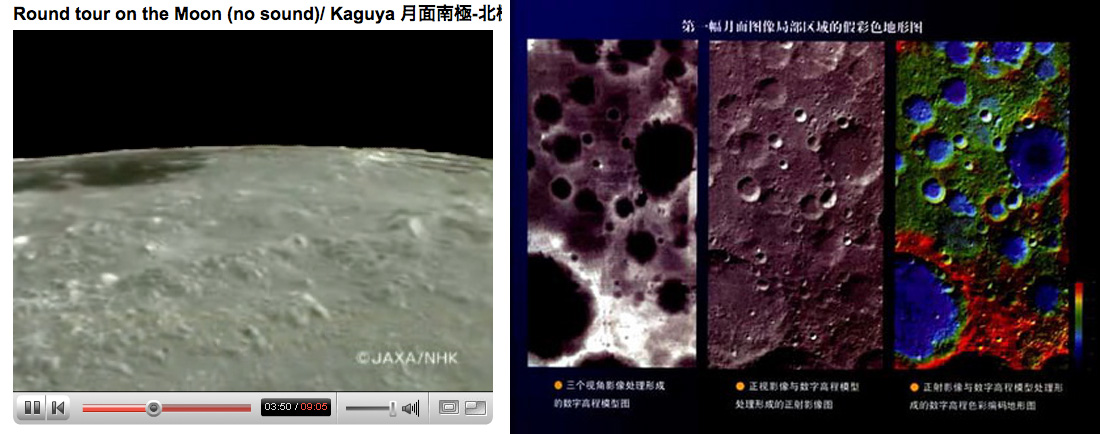
Left: Flying over Orientale - Kaguya image from YouTube, and Right: topomapping from Chang’e
We live in a glorious time for lunar exploration. Not since Apollo has there been such excitement about exploration of the Moon. The Chinese Chang’e and Japanese Kaguya spacecraft are in orbit around the Moon, acquiring high resolution data that will open not a new chapter in understanding our Moon, but a new book. Both countries’ space agencies released remarkable first images, but then have nearly fallen silent, at least to the western world. The images above indicate that exciting data are coming in from the orbiters. The left image shows one of the HDTV videos now visible on YouTube, and the right is from Sina News in Chinese. In the case of the Kaguya videos it is unbelievable that the large scale, high resolution HDTV views are only available (as far as I can discover) in small YouTube windows. For the Chang’e information - which seems to demonstrate how topographic maps are constructed from topo data and images - the information is impressive but not readily accessible to westerners. The space agencies of both Japan and China have convincingly demonstrated that they have the technical capability to make major contributions to lunar science, but to be recognized for their successes they need continuing press releases that depict spectacular and important data. The new lunar programs do not want to follow the example of SMART-1. This European mission was said to be a great success, but there were so few releases of images (and often the selection of releases seemed haphazard) that the mission has made little impact on scientists or the interested public. I recommend that the China National Space Administration and Japan Aerospace Exploration Agency keep their wonderful missions in the scientific and public eye by releasing a new image or data display each week, with an informed commentary that explains the significance of the new contribution. It takes time, but is critical to build the goodwill that good missions deserve. LPOD does this every day, billion dollar agencies ought to be able to do it weekly. I’ll even volunteer to help!
Yesterday's LPOD: Sheets and Quads
Tomorrow's LPOD: Which Way is Downslope?
COMMENTS?
Register, Log in, and join in the comments.



